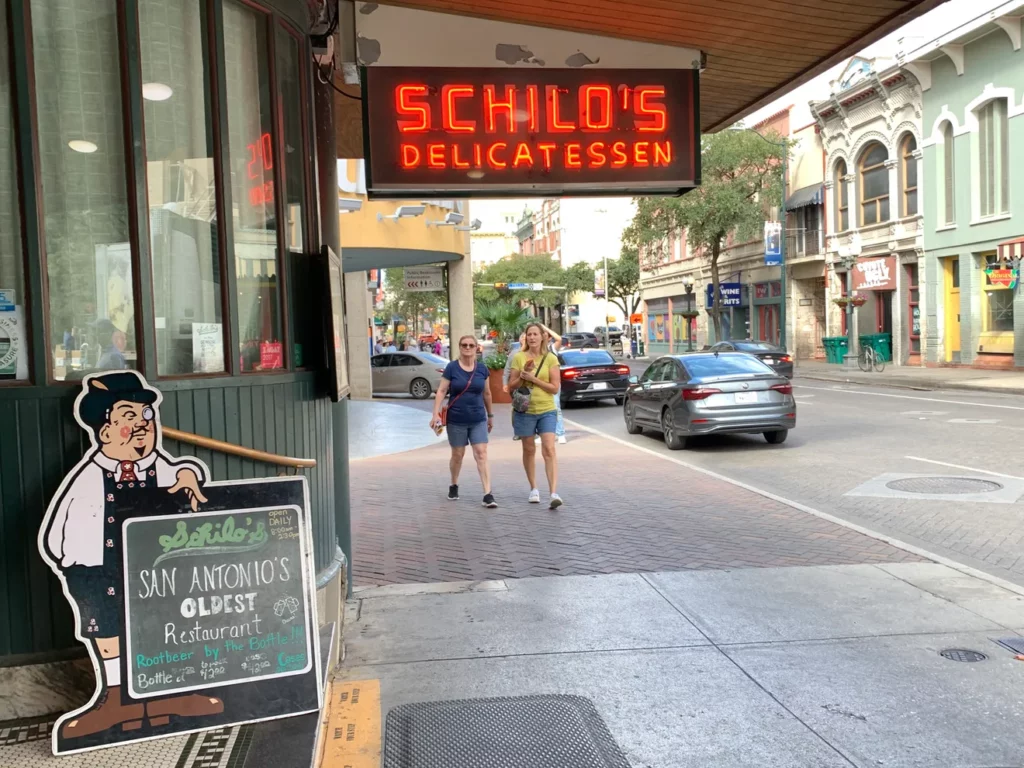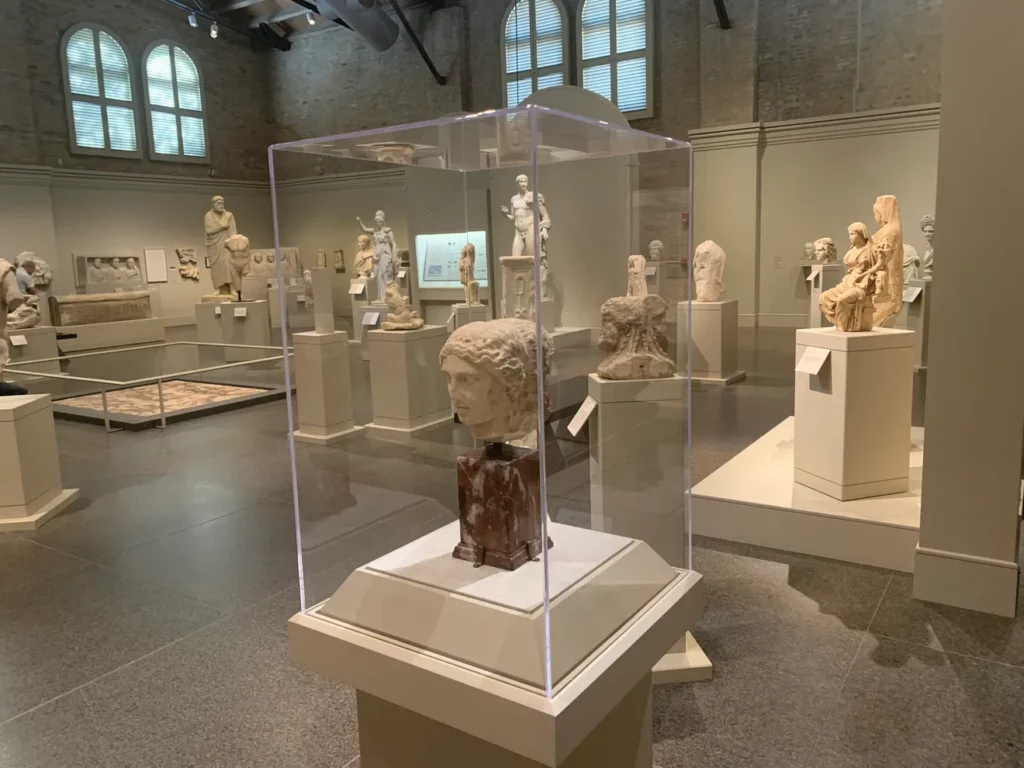
SAN ANTONIO — Come to think of it, not many Texas cities are capable of turning old industrial sites into attractive public amenities.
The Fort Worth Stockyards come to mind. At least in the past, Houston transformed various hulking warehouses into viable markets.
San Antonio, however, has rebuilt at least three such urban winners that serve the local community while attracting ever more tourists to the city.
In 1981, the old Lone Star brewery became the eye-popping San Antonio Museum of Art. In 1986, the Blue Star Ice and Cold Storage plant began its renewal as the Blue Star Arts Complex, a center that promotes recent art.
Not the Alamo:Fields near San Antonio yield evidence of deadliest battle in Texas history
The latest industrial redo is not just a building, but a whole district, planted in and around the former Pearl Brewery.
Starting in 2006, the Pearl District has added singular people magnets around its spacious plaza, something that San Antonio does well. Think of the big three plazas — Military, Main and Alamo — around which the city originally grew.
The centerpiece of the Pearl District these days is the luxury Hotel Emma ensconced in the ornate 1894 building that once housed the San Antonio Brewers Association, which produced Pearl Beer. Opened in 2015, the hotel includes an elaborate lobby bar filled with elements of the structure’s former industrial role, as well as carefully selected local eateries on the ground level.
Clustered around the plaza are an indoor food market, a thriving bookstore, new condos, a music venue situated in a round building that once served as a stable, a riverside amphitheater, and several more restaurants, one of them associated with the San Antonio base of the Culinary Institute of America.

How did another old brewery become a tourist spot?
German-Americans built San Antonio’s once formidable brewing industry.
Started as the J.B. Behloradsky Brewery and the City Brewery in 1883, the Pearl site was associated early on with Lone Star Brewing Company. The name “Pearl” goes back to Germany: “Pearl Beer was formulated and first brewed in Bremen, Germany, by the Kaiser–Beck Brewery, which produces Beck’s beer,” the district’s website explains. “Pearl beer’s name came from Kaiser–Beck’s brewmaster, who thought the foamy bubbles in a freshly poured glass of the brew resembled sparkling pearls.”
The 1894 brewhouse that later became the hotel was designed by Chicago architect August Maritzen in the Second Empire style that one sees repeated in Texas county courthouses. Something of a specialist, Maritzen designed more than 80 breweries in the U.S., Canada and South Africa.
By the early 20th century, the San Antonio Brewing Association had become the largest brewery in Texas. During Prohibition, the company produced soft drinks and other products as the Alamo Foods Company. In 1952, after almost 20 years back in the beer business, the name was officially changed to Pearl Brewing Company.
In 1977, it was acquired by a San Francisco company that also purchased the Pabst Brewery in Milwaukee. That company closed the Pearl plant in 2001, after 118 years on the site. It was purchased that same year by Silver Ventures, a San Antonio-based investment firm, in order to develop the current district.
Silver added amenities year by year, culminating in 2015 with the grand opening of Hotel Emma. One of its eateries, Southerleigh Fine Food & Brewery, brought back the art of brewing to the historic Pearl.
Why visit San Antonio now
Setting up a planned road trip in the Sept. 12 Think, Texas column, I made a case for an Austin-San Antonio mega-metro. Much of the story was devoted to my fond memories of the city, as well as reasons that San Antonio sometimes slips off the state’s radar.
Two weeks later, I published reader responses to the original column. Civic leader Monica Maldonado Williams, who has lived in both cities, delivered the most incisive answer to the interurban neglect. I’ll repeat what she wrote in full.
“Yep, the rest of Texas has left San Antonio alone,” she writes, “probably because it’s seen as a majority Hispanic city and, well, racism. And to that, San Antonio has said: ‘Fine. Be that way.’
“Because in the meantime, San Antonio has become one of the greatest cities in the country — culturally, economically and socially. I still can talk to almost any native Texan and 90% will say they’ve never heard of Fiesta.
“And if you want to see great art in Austin, you’d better drive south to SA. And please. There was never a ‘taco war.’ San Antonio was just being polite.”
All the more reason for an overnight visit Nov. 13-14. During those two days, my road-trip buddy and I explored seven churches, four plazas, three museums, three stretches of the Riverwalk, including Mission Reach and Museum Reach, three excellent eateries and one bookstore, The Twig Book Shop, where I purchased David R. Johnson’s “In the Loop: A Political and Economic History of San Antonio.” I immediately began to devour this valuable book at a shaded table in the Pearl District Plaza.
On Nov. 1, my first report from the trip, an account of an amazing exhibit about the Battle of Medina at the Witte Museum, was published. More columns to come.
Great to see you again, San Antonio.

Stroll down the Riverwalk from the Pearl to the art museum
San Antonio’s tourism industry goes back at least to the 1870s. In fact, “In the Loop” carefully illustrates how many of the city’s leaders leaned on tourism and the military to sustain life there, to the detriment, until recently, of infrastructure and economic diversity.
The Lone Star and Pearl breweries represented two of the city’s periodic efforts to broaden the economy. They were located right on the San Antonio River, which had been envisioned as a manufacturing zone since the mid-19th century.
Luckily, it didn’t go all industrial. Upstream lay land that belonged to banker George Brackenridge, who owned the city’s private water service. Much of that expanse at the river’s headwaters later became Brackenridge Park, Witte Museum, San Antonio Zoo and several major schools.
The Lone Star Brewery, built in 1886 with the help of Adophus Busch of Anheuser-Busch, was the first large mechanized brewery in Texas. In March 1981, the fortress-like building became the home to an art collection once housed at the Witte.
I remember being impressed when I first visited during the 1980s by the ingenious ways that the designers had placed intimate, up-to-date galleries inside mammoth industrial spaces without losing the structure’s historical flavor.
Conveniently, SAMA is on the other side of the river from the Pearl District — a short stroll and one bridge crossing — along what is called the “Museum Reach” of the Riverwalk.
We were not up to the challenge of tackling every floor of the museum this time around. Suffice it to say, that SAMA displays its excellent collections of Latin American, Greek, Roman, Near Eastern, Egyptian and Asian art with great care and credibility. In each case, the museum benefited from a stellar collector. For instance, the 7,000 objects in the Latin American treasury grew out of Vice President Nelson A. Rockefeller’s longtime interest in the region’s culture.

Three places to eat well in San Antonio
Since we tarried in town for just two days — with plans to return early in 2024 — my traveling companion and I chose three meals carefully.
- La Fonda on Main (2415 N. Main Ave): Yummy legacy Tex-Mex and Mexican food in the Tobin Hill neighborhood. Founded in 1932 inside a graceful house, it now offers several dining rooms and patios. Besides chips and dip with a margarita to start, I opted for La Fonda Special: Tex-Mex cheese enchilada, crispy beef taco, pork tamale, guacamole ($19). Heaven on a shady patio.
- Schilo’s Delicatessen (424 E Commerce St.): Founded in 1917, the city’s oldest restaurant is pronounced “shee-low’s.” Also known as Schilo’s German-Texan Restaurant, the place evokes sharp nostalgia for those who grew up in the city. I ordered the “Taste of Germany” plate, only $14, and a glass of hefeweizen. Other menu items favored by my correspondents are the split pea soup, spicy mustard, dark bread, root beer and all the breakfast dishes.
- Southerleigh Fine Food and Brewery (136 E. Grayson): In 2015, this purveyor of coastal Southern cuisine brought back brewing to the Pearl District. Seated on the plaza outside Hotel Emma, a guest can watch the world go by while sipping a Tide Runner pale ale or a Hasbulla’s Revenge Russian stout (both $7). The place advertises “Large Plates,” but I chose instead four appetizers and sides — crab mac and cheese, jalapeño cheddar grits, deviled eggs and a wood-fired pretzel — all lovely but impossible to finish in one sitting.
Michael Barnes writes about the people, places, culture and history of Austin and Texas. He can be reached at mbarnes@gannett.com. Sign up for the free weekly digital newsletter, Think, Texas, at statesman.com/newsletters, or at the newsletter page of your local USA Today Network paper.
To review this article visit – https://www.statesman.com

